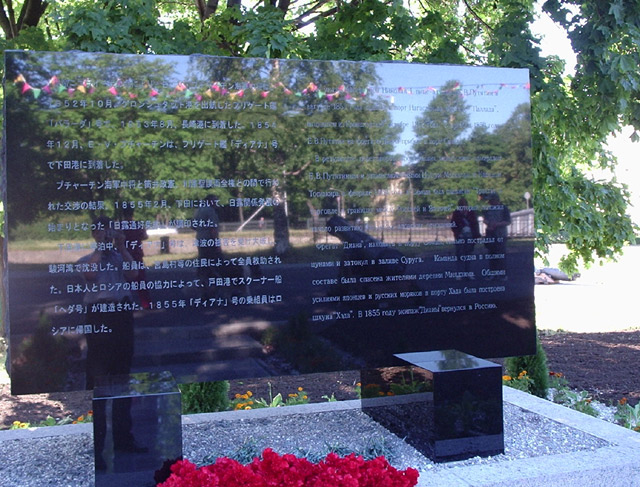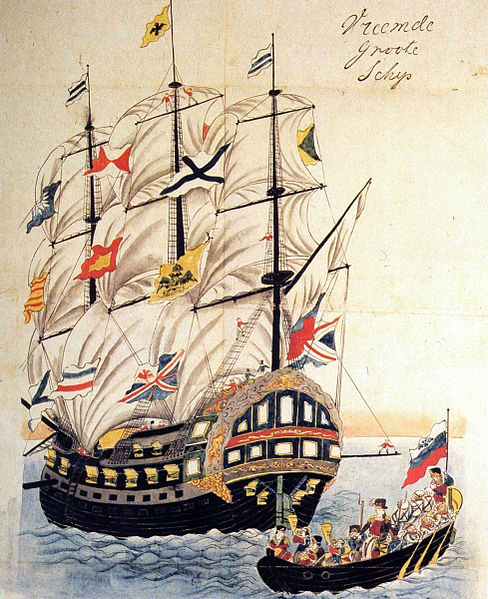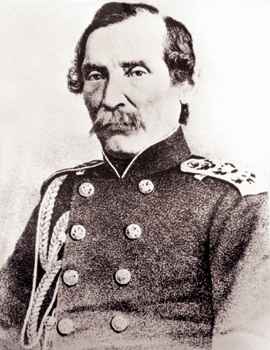A memorial sign in honor of the 150th anniversary of the establishment of the Russian-Japanese relations.
In 1852 frigate Pallada left Kronstadt harbor and headed for Japan. It was the expedition under the command of Admiral Yevfimy Putyatin. The Pallada reached the Japan islands in 1853. During the expedition, she was commanded by Admiral Ivan Unkovsky.

These efforts culminated in the signing of the Treaty of Shimoda, a commercial treaty between Russia and Japanin 1855. This agreement laid the foundation of relations between Russia and Japan.

On 7 February 1855, the long-awaited Russo-Japanese treaty of friendship was signed at the Chōraku-jiTemplein Shimoda by Putiatin as Russian Imperial Ambassador and Japanese representative Controller Toshiakira Kawaji. The treaty was based on mutual trust and understanding and would be the start of relations between the two countries. The treaty comprised a trade agreement which opened three Japanese harbors toRussia, one more than the Americans had. Article V stipulated that trade would be performed through the harbors of Hakodate, Nagasaki, and Shimoda. These harbors would provide goods and reparations. Also worth mentioning is Article VI, allowing Russia to appoint consuls in Hakodate and Shimoda. Furthermore, the treaty also partially defined the northern borders of Japan. The Northern Territories were a great burden in Russian-Japanese relations.

The Russo-Japanese border in the Kurile Islands was drawn between Etorofu and Uruppu. Everything north of this line was Russian, and everything south was Japanese (Etorofu, Kunashir, Shikotan and the Habomais).
Both parties also agreed to consider Sakhalin subject to both Russian and Japanese influence. Russia would therefore destroy its military base in Ootomari in the south of Sakhalin.
In 2005, in honor of this event the monument was unveiled in Kronstadt.





